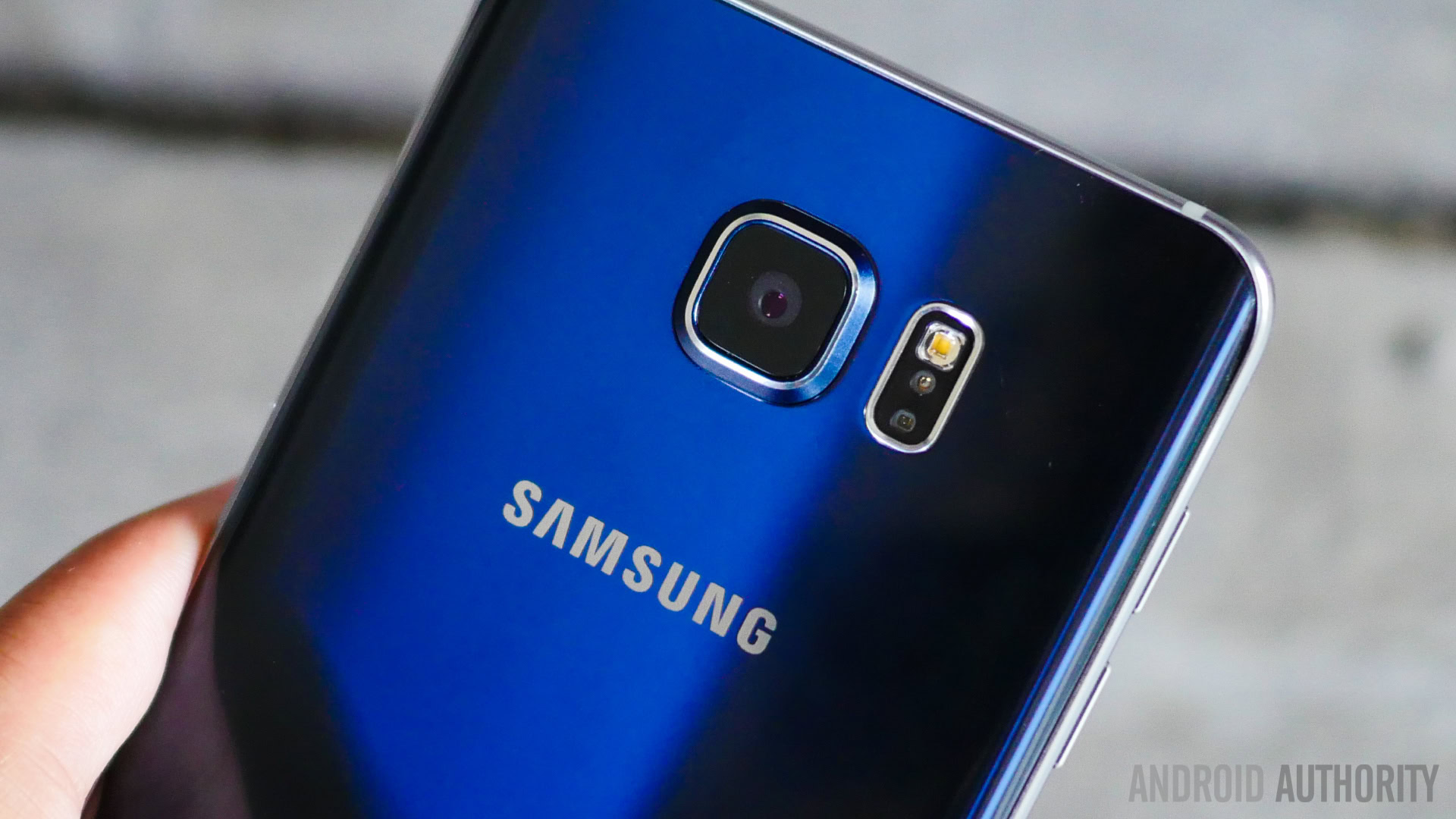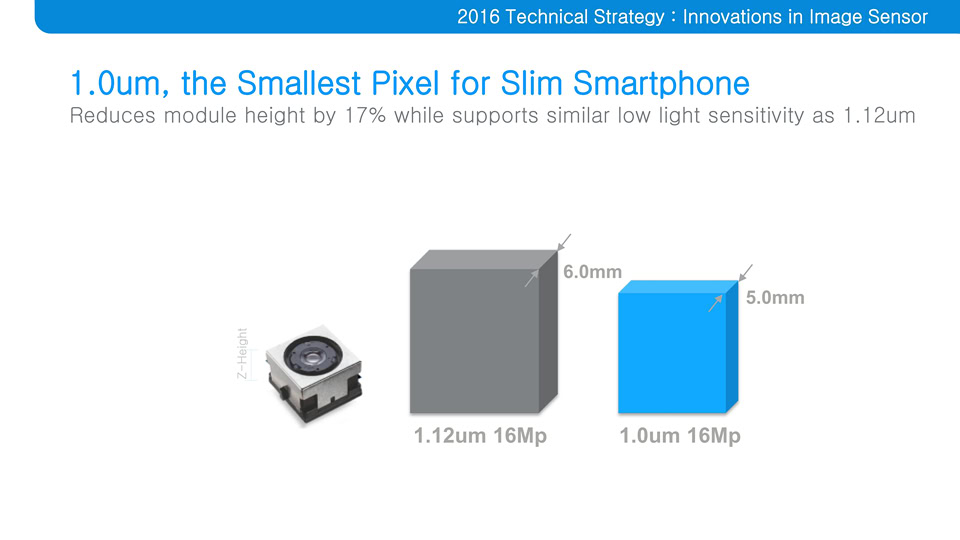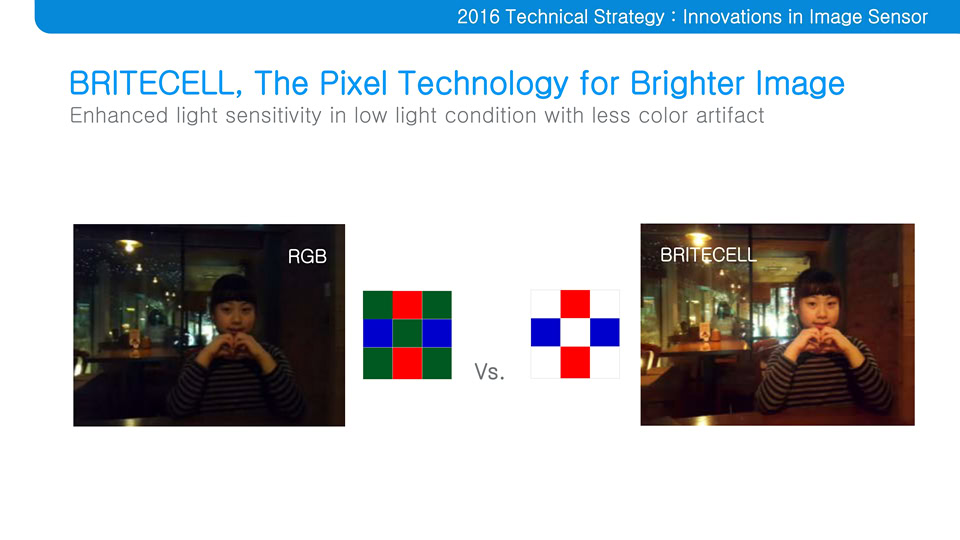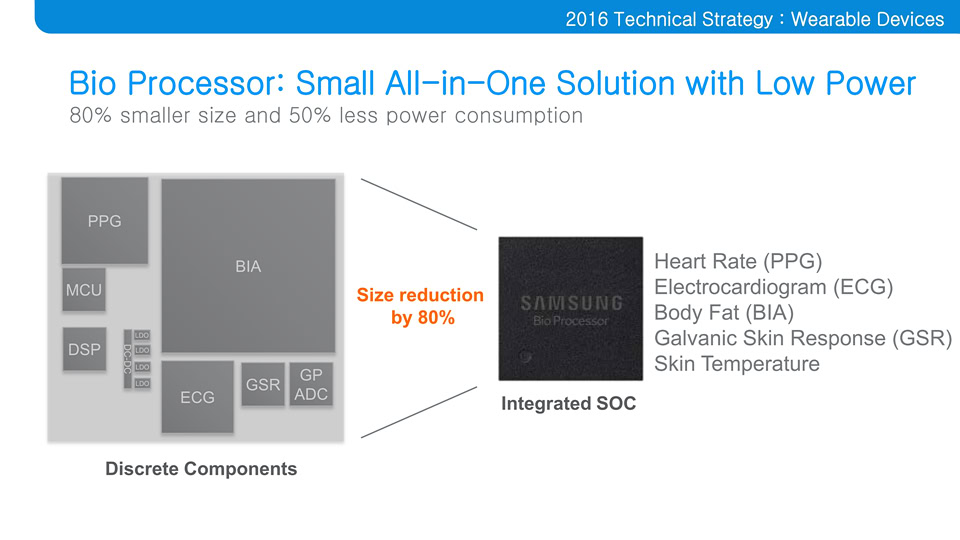Affiliate links on Android Authority may earn us a commission. Learn more.
Samsung announces BRITECELL smartphone image sensor
November 18, 2015

Speaking at its 2015 Investors Forum, Samsung has revealed details about its new BRITECELL camera technology. The technology is expected to appear in future smartphones, possibly even the Galaxy S7.
BRITECELL is designed to improve performance in low light environments, as the name implies, by building on the company’s ISOCELL technology and resulting in less color artifacts. Oddly enough, Samsung says that it can accomplish this with smaller pixel sizes. The pixel size shrinks from 1.12um to 1.0um, resulting in a 17 percent reduction in module height and an increase in density up to 20 megapixels, all while allowing for similar low light sensitivity at 1.12um. With smartphones becoming thinner and lighter, there is an aesthetic need for Samsung to make its camera modules smaller.

The main improvements to light capture appears to come from changing the pixel arrangements, rather than their size. Samsung intends to do away with the traditional Bayer filter layout, replacing the green pixels with white ones. By removing the filter layer over the green pixels, more light will enter the sensor. Samsung’s ISCOCELL technology prevents light bleed between cells here, but processing will be needed to compensate for the different colors.

Samsung also has some improved image processing technology heading our way too. Smart WDR is designed to further increase a picture’s dynamic range by using multiple exposures, similar to how HDR software features work in many camera apps. Phase Detection Autofocus also makes an appearance in Samsung’s latest sensor technology, which allows for faster focusing using light detection in some of the sensor’s pixels. We have already seen PDAF appear in a number of new flagship smartphones that are powered by Sony’s latest Exmor RS sensors.
Samsung did not specifically mention any products that would be using its new BRITECELL technology, although it does appear destined for smartphones. Some rumors have already speculated that Samsung will debut this sensor in the Galaxy S7, much like it made use of its own ISOCELL sensors for the Galaxy S5.
Along with its new image sensor, Samsung also announced a ‘Bio Processor’ designed for wearable products. More specifically, the processor is designed around health tracking, packing heart rate, electrocardiogram, skin temperature and other processing components into a single SoC package.

As a result of these optimization, the chip fits into an 80 percent smaller space and consumes 50 percent less power, compared with using individual discrete components. Given that wearable product are limited in internal space and battery capacity, this chip could prove popular in future devices. Samsung also reckons that the automotive and gaming industries will also be interested in its Bio Processor, and that the information collected from these sensors could even be used in a security system to identify individuals.
Samsung stated that it is in talks with several companies to make use of its Bio Processor for wearables. We can probably expect to see Samsung’s latest processors and image sensors appear in consumer products next year.